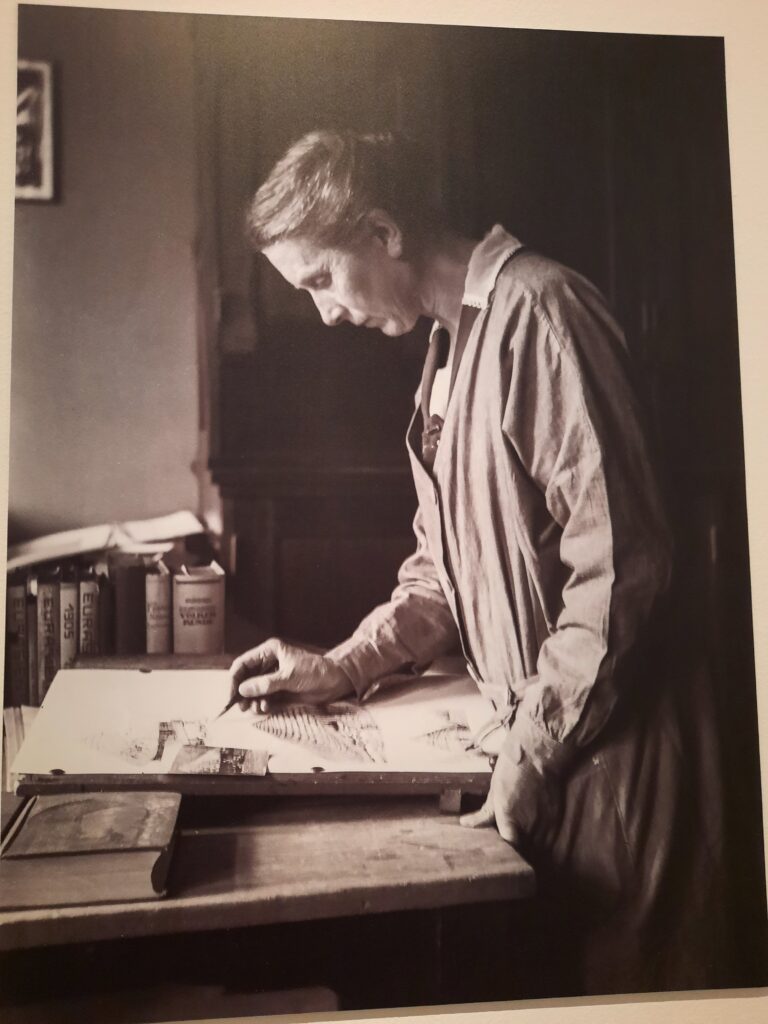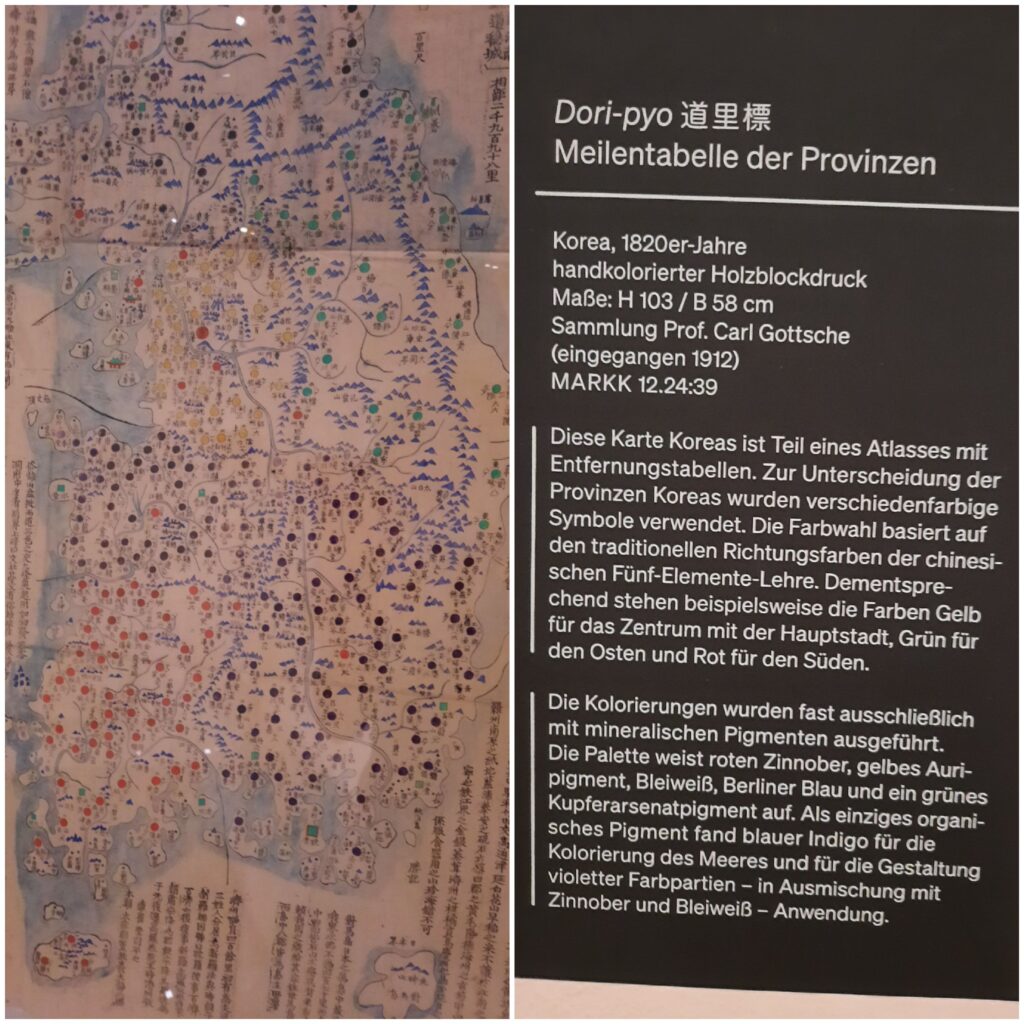The train stopped in Koblenz for half an hour and in Hamburg I am thrown from the subway because a madman is threatening the citizens and the police with a knife.
Before family obligations stoped me, I visited the Museum am Rothenbaum. There is an exhibition on cartography and color. After months of staring at the chronoscope, the real maps overwhelmed me.
The five Chinese phases, wuxing, have been incorporated into a Korean map. Red is the south, the west is white, black is the north, green is the east and yellow is the center.
I spend a long time in front of a pictorial map of Wutaishan, a Buddhist pilgrimage site about 350 km from Beijing. The pictorial maps are my favorite anyway, I could look at them for hours.
I learned that iron gall ink was made of iron and oak galls that are caused by chemicals injected by the larva of certain kinds of gall wasps.
In an adjoining room there is an exhibition about the women who worked in the museum at the beginning of the 20th century and who inventoried and drawn the museum pieces. Little biographical information and personal testimonies have been received from the women, but many have attended the arts and crafts school in Hamburg.

Initially, from 1905, a male research assistant was entrusted with the inventory of the objects, but was replaced by female technical assistants from 1907. They earned 100 marks a month, which was half the pay of a male research assistant. The Hamburg Museum was the first in Germany to employ women as assistants. A draftswoman created index cards for 1,500 objects on average each year.

